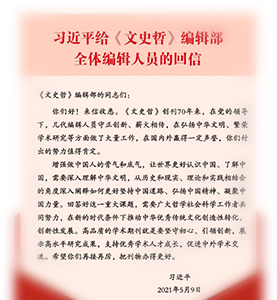晚明耶教“民间布道”之考察:龙华民路线的新定位
柴可辅
摘要:关于“礼仪之争”的历史原因,一直为后世研究所关注。由于“礼仪之争”与平民布道关系至深,而龙华民作为民间路线的开拓者,其传教思路与利玛窦的上层路线颇有不合,所以将龙氏观作利氏的对立方,已然成为相关研究的某种价值预设,甚至有人以龙氏为“礼仪之争第一人”。传统的价值评判,究其根本是为明末清初耶教传教的历史境遇寻求内因,然而这种将“悲剧”结局多少系于龙华民,确有割裂传教方式的历史演变之嫌。事实上,耶教的焦点意识从上层走入民间,由“学者”转至“不学者”,是“合儒补儒以超儒”的既定策略所内蕴的自然趋势,龙华民与利玛窦表面龃龉的背后,是前者在传教史的整体中对后者的直接深化与继承,两种路线之间的转换,又可视为双方在谋求传教的“均衡”运作。如此,利氏坚持以龙氏为继任者,便不应视之为“失察”,而是对下一阶段传教工作的明确安排。
A Research on Jesuits’ Preach to Civilians in Later Ming Dynasty: the New Location of Longobardi’s Missionary Method
Chai Kefu
What causes ‘the dispute of Rites’ is a question concerned by scholars who research the cultural communication between China and the West. Because of the deep relationship between ‘the dispute of Rites’ and the Jesuits’ preach to civilians, also owing to the huge difference between Ricci’s missionary method and Longobardi’s, traditional researchers tend to regard Longobardi as an opponent of Ricci. This kind of view has been an idealistic presenting used to understanding the nexus between the both, evenly, some people insist on an opinion that Longobardi is the beginner of ‘the dispute of Rites’. Admittedly, to some extent, Longobardi’s missionary method is an internal cause which leads to Catholic Church’s expulsion by Emperor KangXi in the subsequent Qing dynasty, but, it is unfair that his method must take full responsibility for that tragedy. From the beginning, there had been a natural spur in the missionary work, which encouraged churchmen living in China, including Longobardi and also Ricci, to change the target group of sermon from elite to common people. In this sense, Longobardi’s method can be seen as a succession of Ricci’s, both of them constitute a balanced and complete system applying to the whole China. Thus, Ricci’s decision that chose Longobardi as his successor is not a mistake, but a clear arrangement for missionary work in the next stage.


